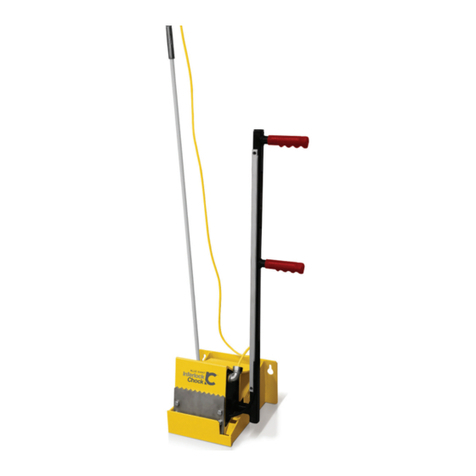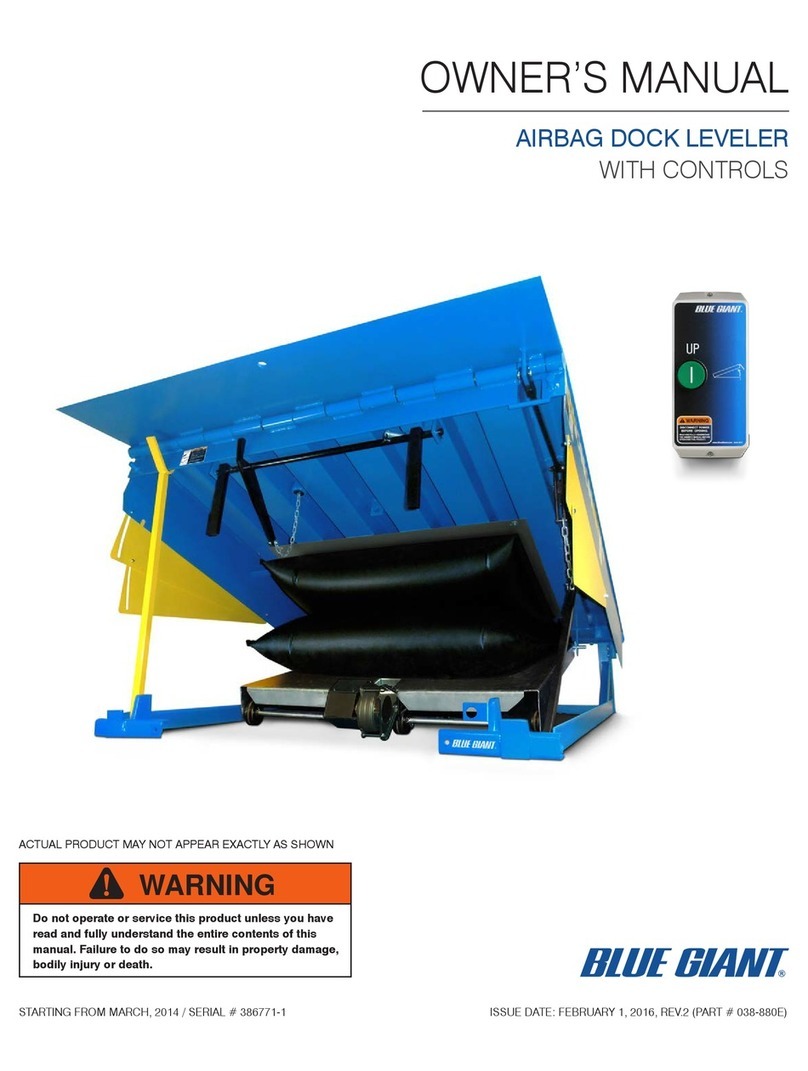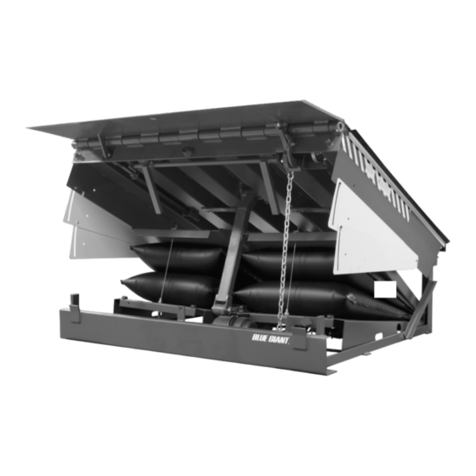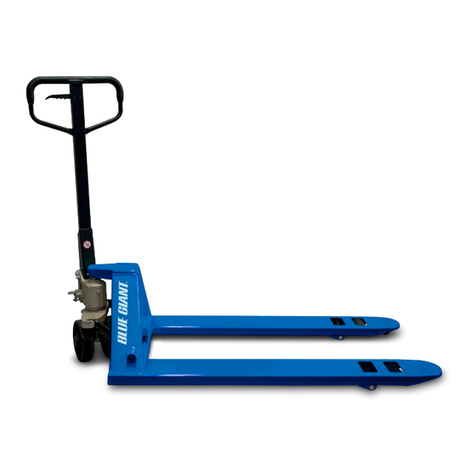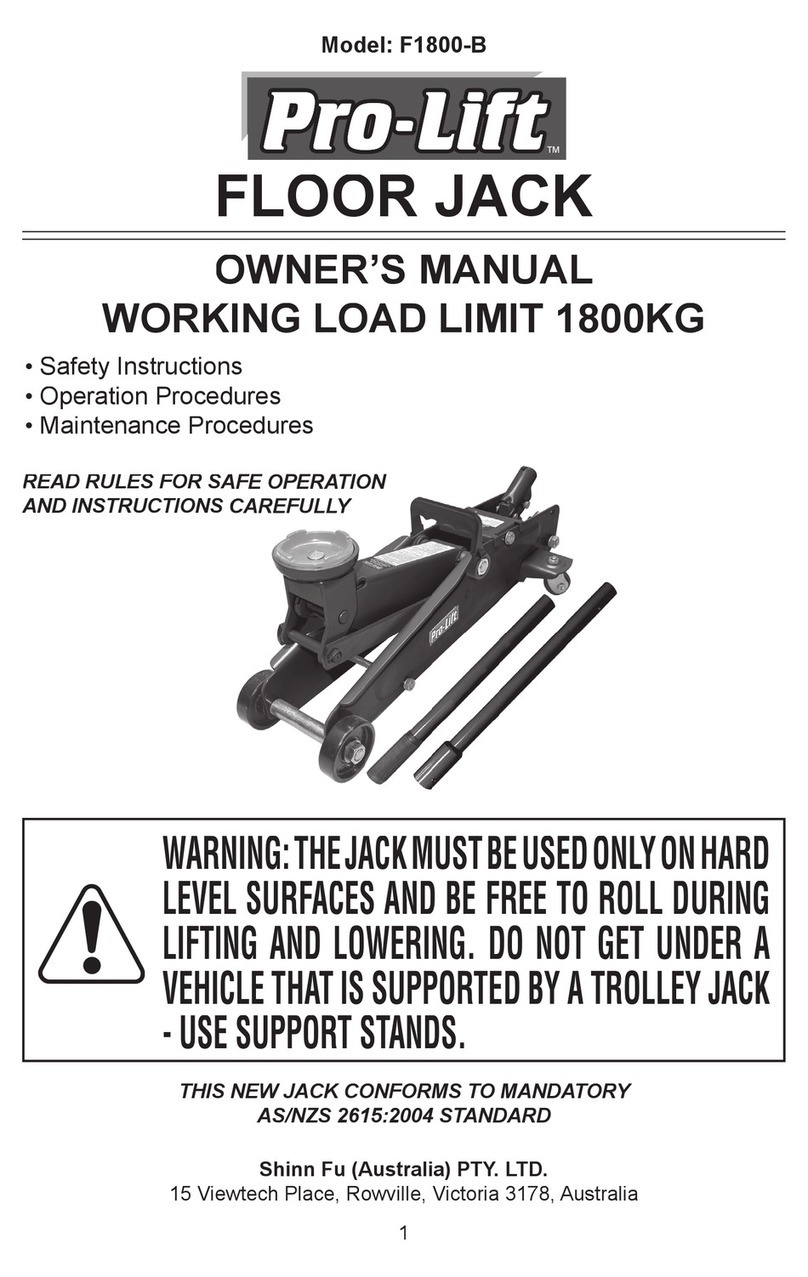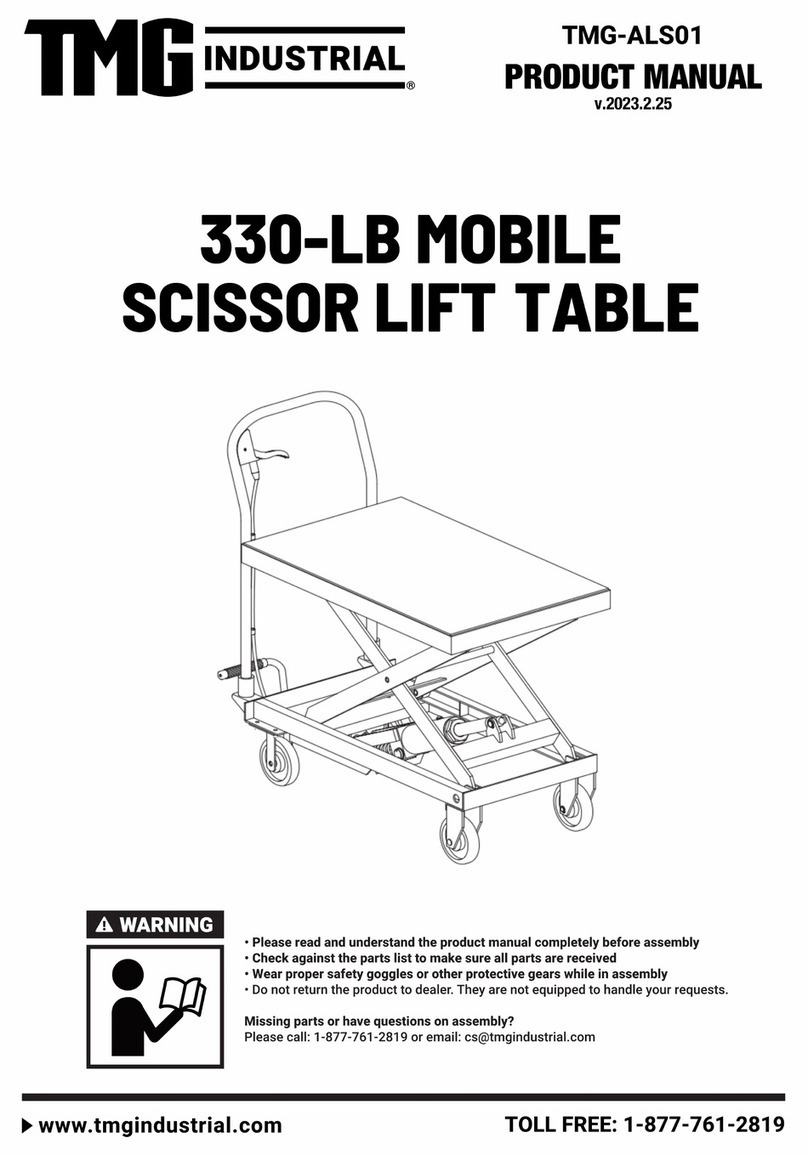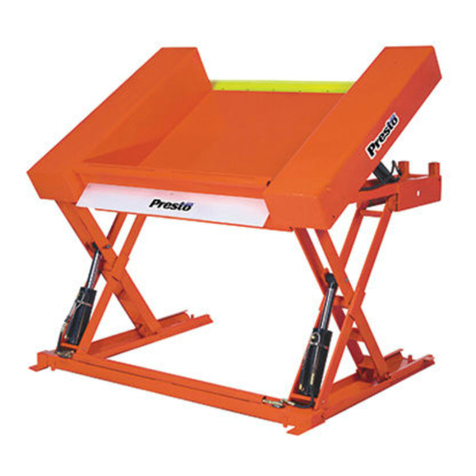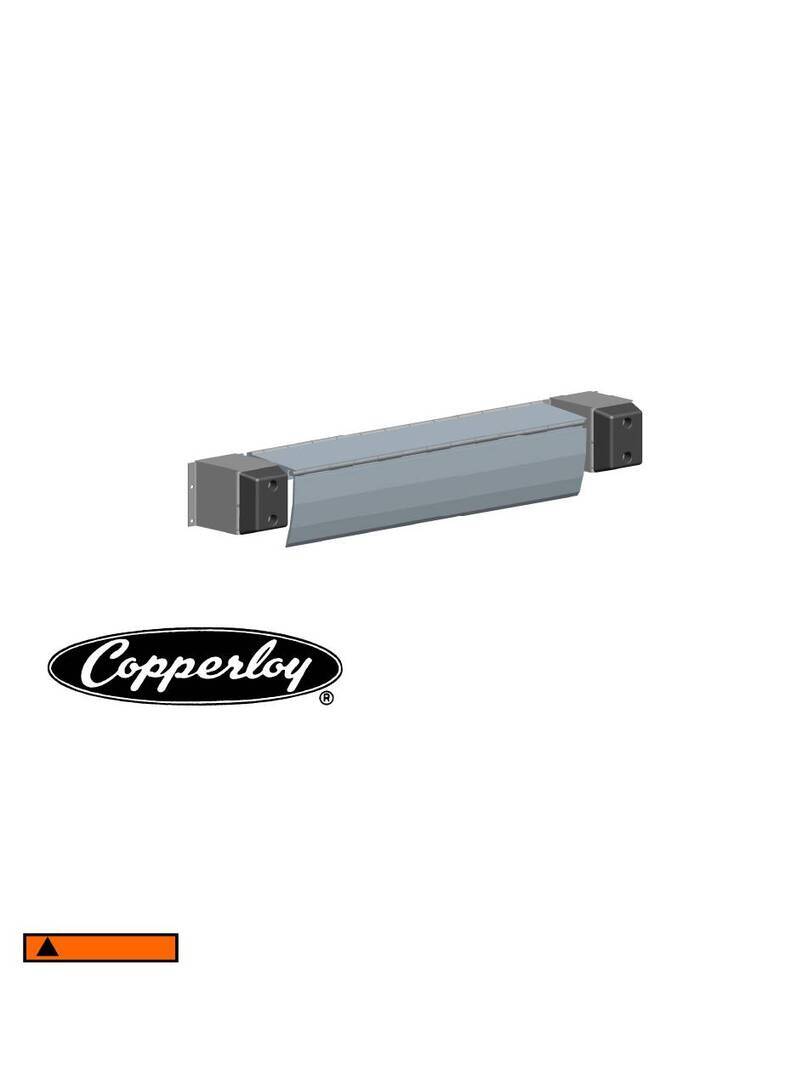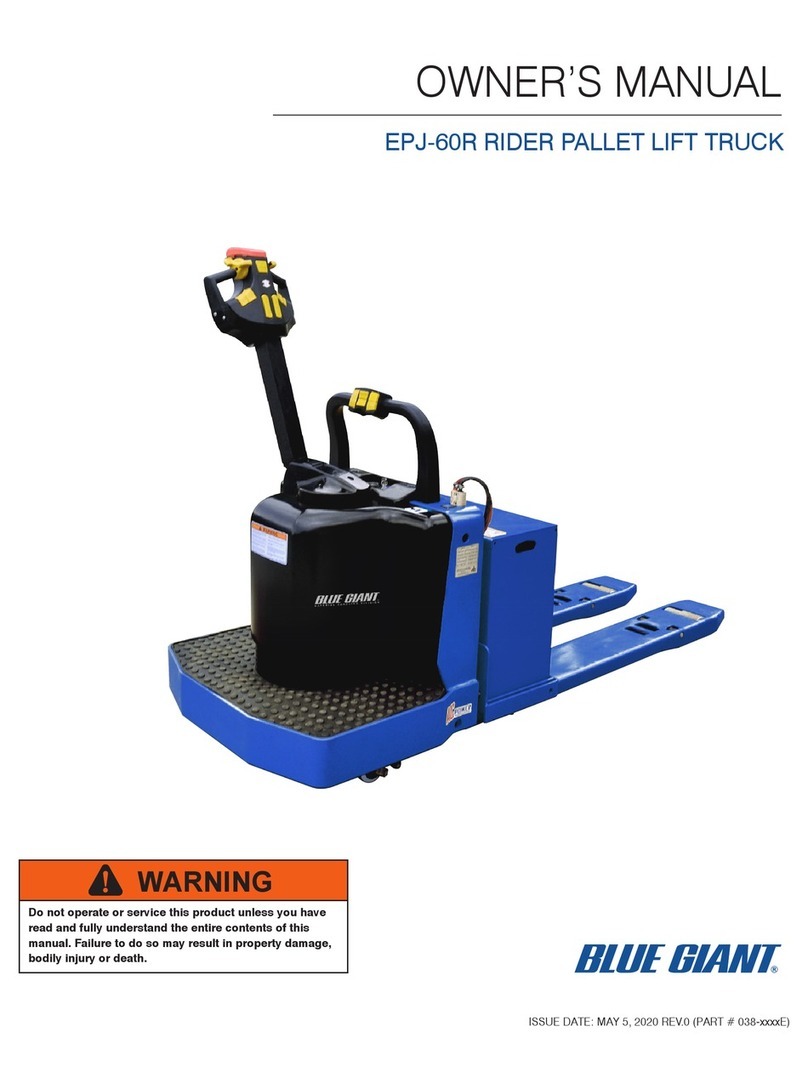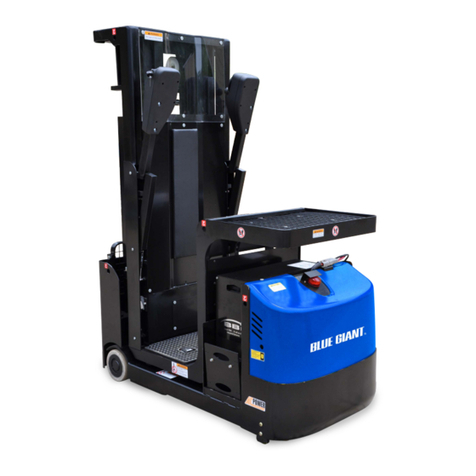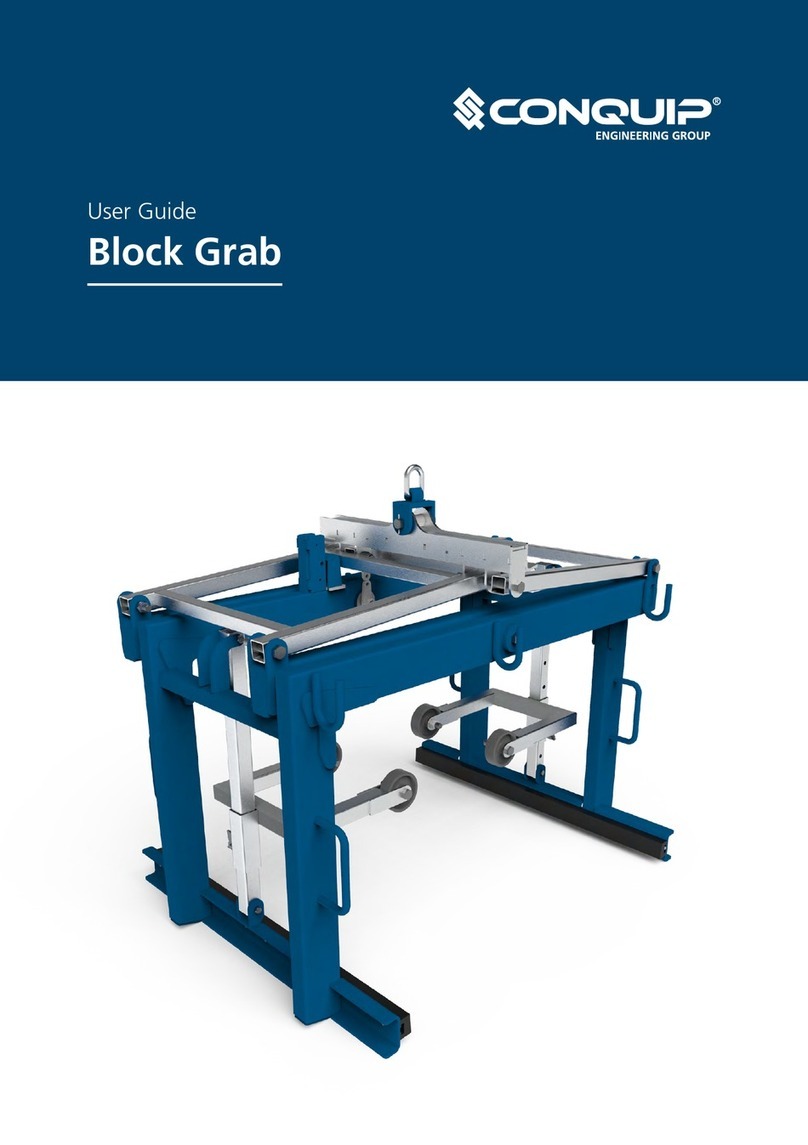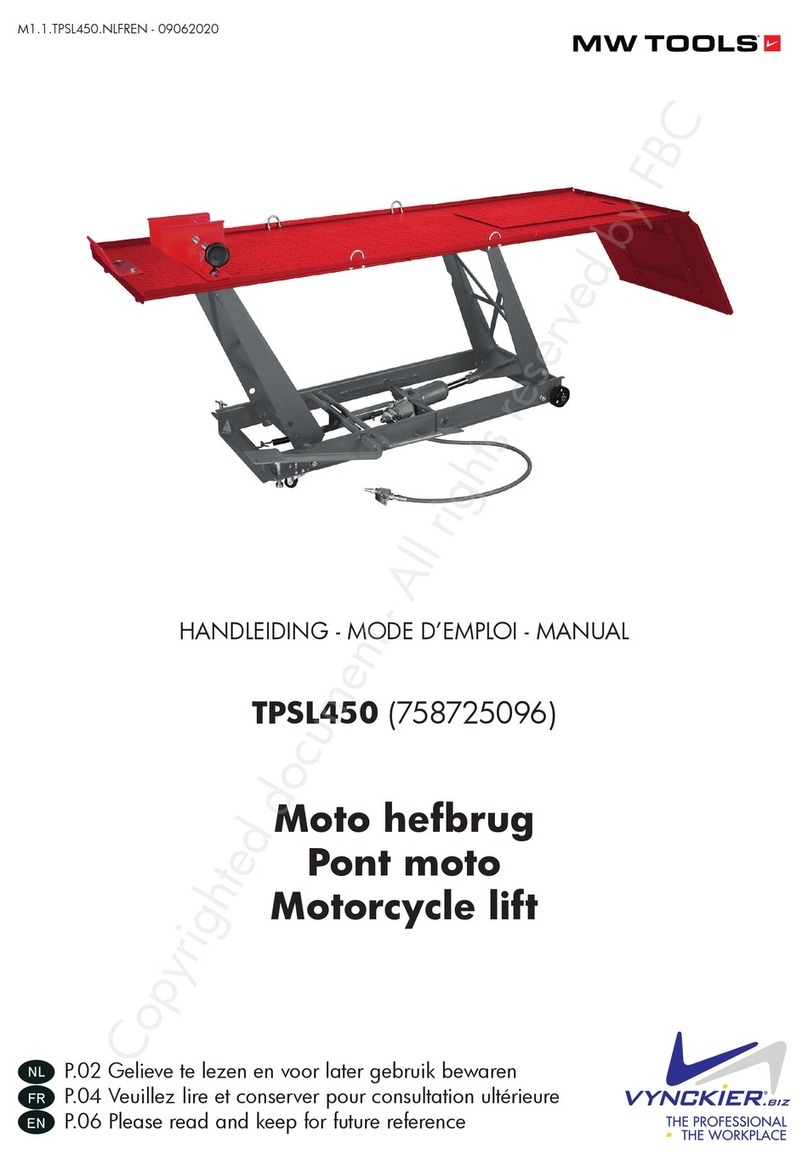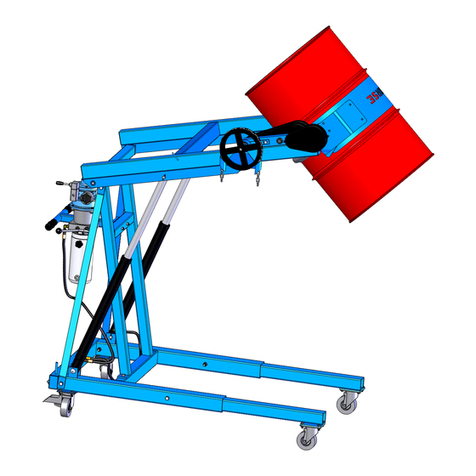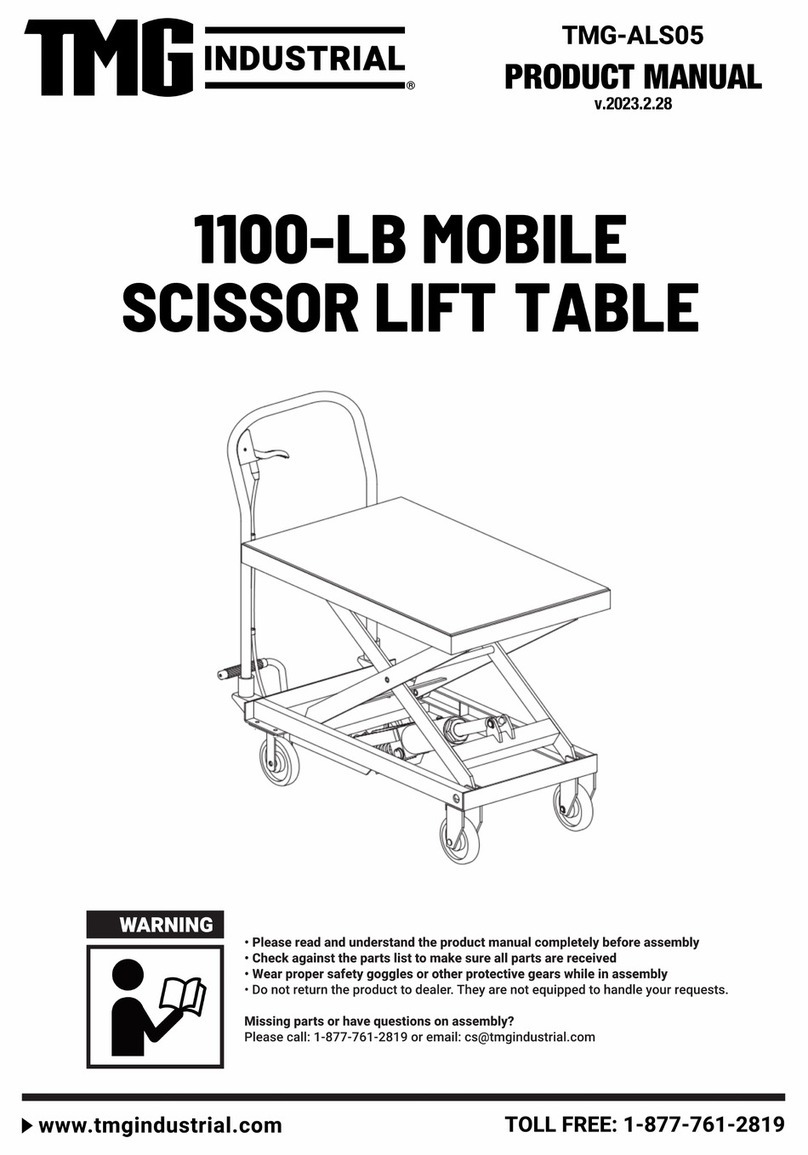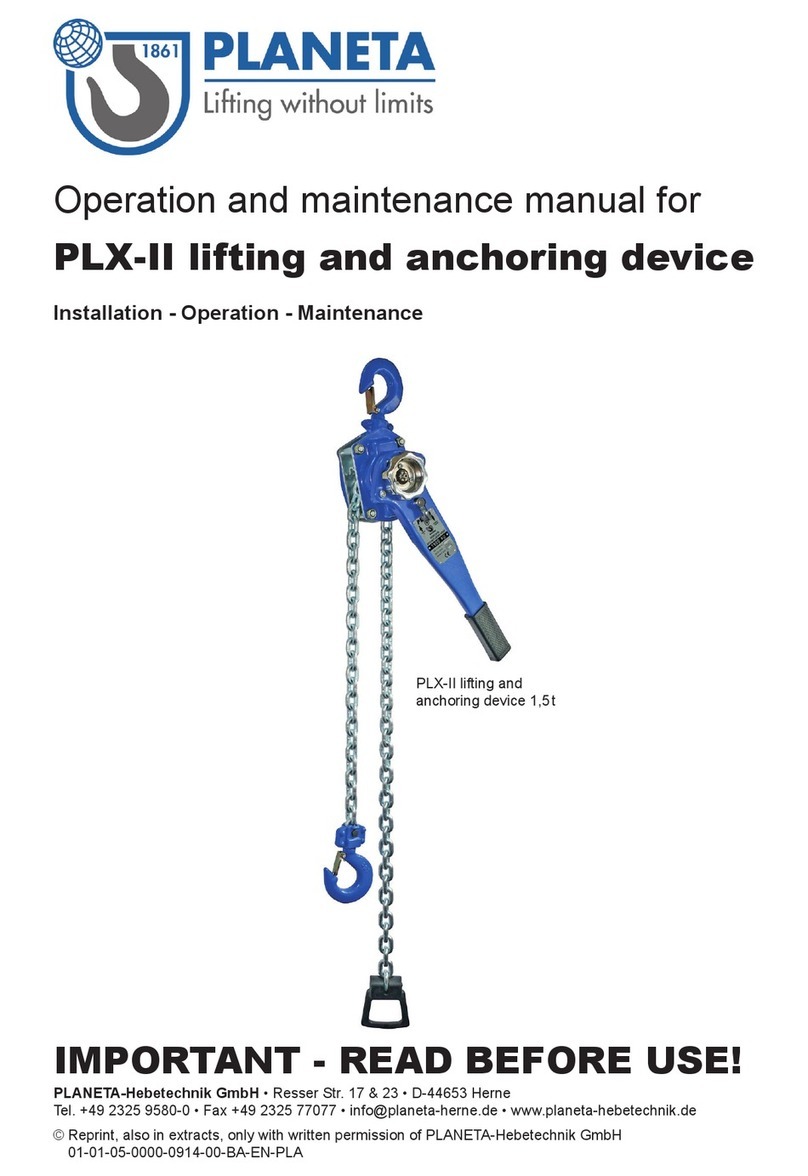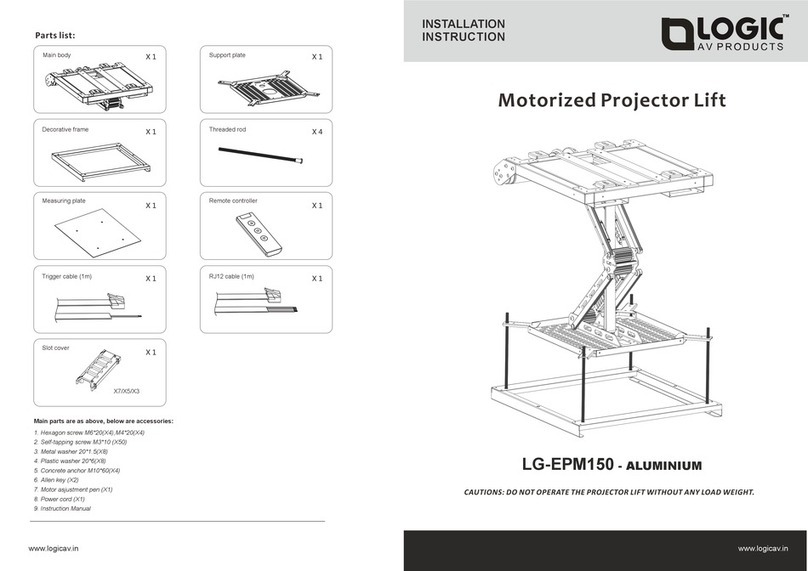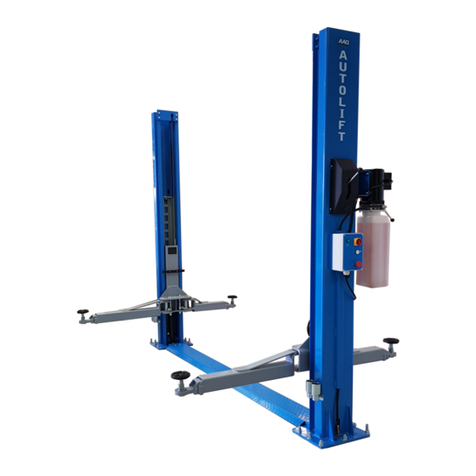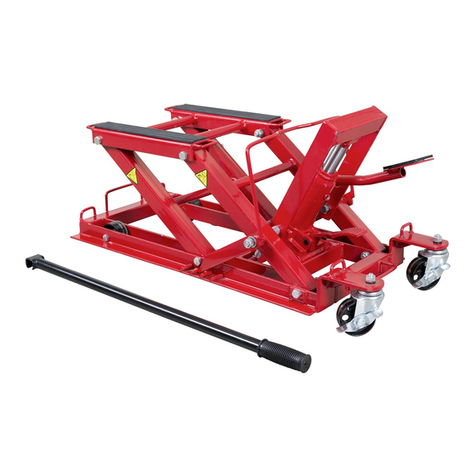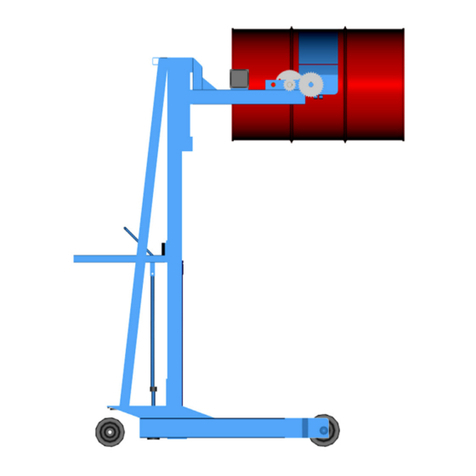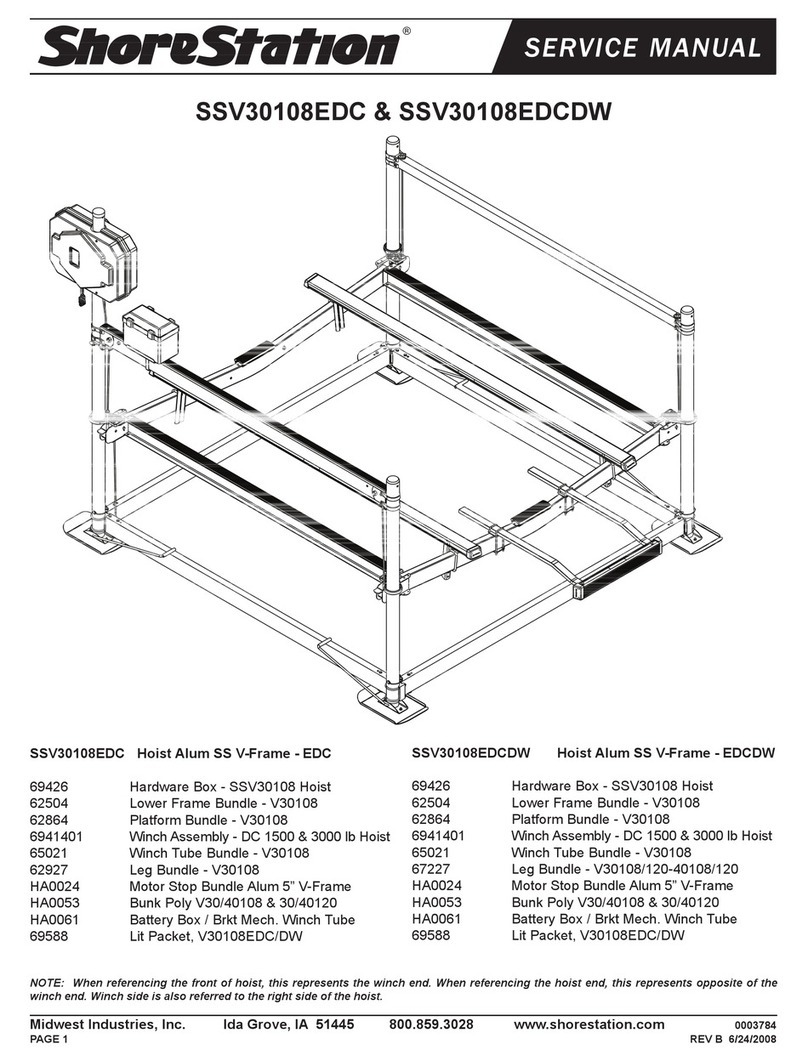
2-5.2. Safety Rules
• Wear protective clothing, such as rubber apron,
gloves, boots and goggles when performing any
maintenance on batteries. Do not allow electrolyte to
come in contact with eyes, skin, clothing or floor. If
electrolyte comes in contact with eyes, flush
immediately and thoroughly with clean water.
Obtain medical attention immediately. Should
electrolyte be spilled on skin, rinse promptly with
clean water and wash with soap. A baking soda
solution (one pound to one gallon of water) will
neutralize acid spilled on clothing, floor or any other
surface. Apply solution until bubbing stops and rinse
with clean water.
•Do not bring any type of flame, spark, etc., near the
battery. Gas formed while the battery is charging, is
highly explosive. This gas remains in cell long after
charging has stopped.
•Do not lay metallic or conductive objects on battery.
Arcing will result.
•Do not touch non-insulated parts of DC output
connector or battery terminals to avoid possible
electrical shock.
•Disconnect all AC and DC power connections before
servicing battery.
•Do not charge a frozen battery.
•Do not use charger if it has been dropped or
otherwise damaged.
2-5.3. Maintenance Personnel
Batteries may only be charged, serviced or replaced
by trained personnel. This manual and the
manufacturer’s instructions concerning batteries and
charging stations must be observed when carrying out
the work.
2-5.4. Maintenance Personnel
Batteries may only be charged, serviced or replaced
by trained personnel. This manual and the
manufacturer’s instructions concerning batteries and
charging stations must be observed when carrying out
the work.
2-5.5. Maintenance Personnel
Batteries may only be charged, serviced or replaced
by trained personnel. This manual and the
manufacturer’s instructions concerning batteries and
charging stations must be observed when carrying out
the work.
2-5.6. Battery Care and Charging
CAUTION: Never smoke or bring open flame near
the battery. Gas formed during
charging is highly explosive and can
cause serious injury.
1. Charge the battery only in areas designated for
that use.
2. Battery terminals should be checked and cleaned
of corrosion regularly. Good battery terminal
contact is essential not only for operation, but also
for proper charging of the battery.
3. Make certain battery used meets weight and size
requirements of vehicle. NEVER operate vehicle
with an undersized battery.
2-5.7. Battery Cleaning
Wipe batteries with a clean rag.
2-5.8. Maintenance Free Battery
This vehicle is equipped with a maintenance free
battery. The battery is completely sealed, will not
require any watering and have a full 80% discharge
available.
Sealed Maintenance Free batteries contain a
pressure release valve and under normal operating
conditions do not require any special ventilation.
CAUTION: Do not try to open this battery or remove
the pressure release valve.
Only under severe overcharging, such as connected
to an improperly sized charger, will any significant
amount of gases be released from the battery. Also,
being a valve regulated battery, it never requires
watering.
2-6. CHARGING BATTERIES
Charging requirements will vary depending on depth of
discharge and temperature. Follow safety rules when
placing a battery on charge.
Proceed as follows:
1. Park vehicle at charging station with platform
lowered and turn the key switch OFF.
2. Apply the emergency disconnect switch.
3. Check the condition of the cord. If there are any
cuts in the cord, any exposed wires, loose plugs
or connectors, DO NOT attempt to charge the
batteries.
4. Connect plug from the vehicle to a power outlet
and charge the battery according to Supplement
374 *.





















